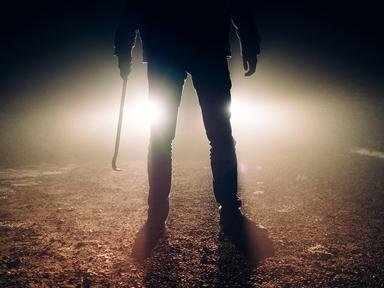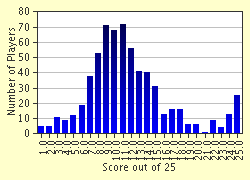Quiz Answer Key and Fun Facts
1. When did the killings begin?
2. Who was the King County detective in charge of the case (in his district only)?
3. On Sunday, August 15 1982, a man was rafting on the Green River when he came across a couple of men on the bank of the river. To this man the men looked suspicious. What was the name of the man who was rafting?
4. Who was the head of the Criminal Investigation Division?
5. What famous 'Ted' investigator was asked to oversee the Green River Killer investigation?
6. The F.B.I. was called in early to take over the case.
7. During a meeting of all the investigators from King County, Kent, Tacoma, and Seattle, a list of common ground was compiled.
8. What was the name of the psychic that offered her help on the case?
9. Residents of Washington State believed that the killer was a policeman or someone pretending to be one.
10. What was the name of the man who was a suspect in four incidents involving prostitutes?
11. What is the name of the detective who was sent to the F.B.I.'s training facility in Quantico, Virginia to enlist the aid of the FBI's Behavioral Science Unit?
12. What is the name of the F.B.I. agent who pioneered the use of profiling in serial murder cases?
13. A person known as TD was a prime suspect in the Green River case.
14. What color was the pickup truck that police observed cruising very slowly along the strip?
15. On September 26, 1982, a trail biker discovered a body near the Seattle-Tacoma Airport?
16. On what day did a double murder take place?
17. Where was the driver's licence belonging to Maria Malvar found?
18. By 1983, the Green River Killer began dumping the victims' bodies on land.
19. What famous serial killer offered his help on the Green River Killer case?
20. Who did Bob Keppel interview in Starke, Florida who said he had information dealing with the case?
21. When did the F.B.I. take over the case?
22. What is the name of the retired Los Angeles Homicide Detective who was brought in to consult on the Green River Killer case?
23. What was formed as the result of a retired LA Homicide detective being brought in to consult on the case?
24. By February of 1990, how many woman had fallen victim to the Green River Killer?
25. On November 30, 2001, Seattle police arrested a man suspected of being the Green River Killer. What is the name of this man?
Source: Author
JuniorTheJaws
This quiz was reviewed by FunTrivia editor
bloomsby before going online.
Any errors found in FunTrivia content are routinely corrected through our feedback system.

